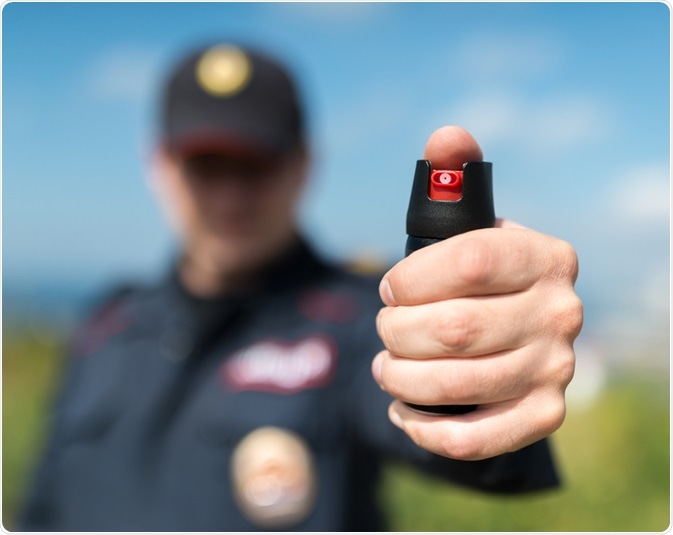The identification of a criminal who used a homemade pepper spray to commit heinous acts is often challenging for law enforcement officials, as these riot control agents (RCAs) are often unlabeled.

Image Credit: Vladimir Arndt/Shutterstock.com
In an effort to assist forensic investigators interested in differentiating these types of RCAs, a team of Swedish researchers developed a novel technique that combines gas chromatography-mass spectrometry (GC-MS) with orthogonal projection to latent structures-discriminant analysis (OPLS-DA).
Introduction
Both pepper sprays and teargases fall into the category of riot control agents (RCAs), which, as the name indicates, are non-lethal agents that are primarily used to control riots and maintain peace among civilians.
When applied to areas of exposed skin, RCAs interact with sensor nerve receptors on mucosal surfaces to cause local pain and/or discomfort. The application of RCAs to the eyes typically causes profuse lacrimation, as well as temporary blindness and disorientation.
Isolating Oleoresin capsicum
The active ingredient in pepper sprays that causes the aforementioned health effects to arise is Oleoresin capsicum (OC), which is a liquid chemical that can be extracted from Capsicum chili peppers.
The pungency of any given pepper spray typically depends on the chili type, the maturity of the dried fruit obtained from the pepper, the type of environment the pepper was grown and the conditions present during OC extraction.
Regardless of its origin, the development of pepper sprays typically involves the use of either high-performance liquid chromatography (HPLC) or gas chromatography (GC), both of which are typically coupled with mass spectrometry (MS), to separate the capsaicinoids.
Analyzing homemade RCAs
Many websites and YouTube videos provide interested users with a step-by-step method to isolate OC from a wide range of commonly ingested chili peppers. Unfortunately, homemade pepper sprays can often be misused for various criminal purposes.
Since homemade pepper sprays cannot be identified from their packaging, law enforcement officials often face challenges in identifying the origin of homemade sprays used during crimes.
To assist forensic scientists in the original identification of homemade pepper sprays, a recent study conducted by researchers at the Swedish Defense Research Agency and Umeå University used the chemical attribution signatures (CASs) of homemade pepper sprays to conduct multivariate data analysis.
In their work, thirteen different chili types obtained from three different species were used to extract capsaicnoids by methods obtained from YouTube videos. Once the extracts were isolated, all samples were analyzed by GC-MS.
Data obtained from the GC-MS, which come in the form of chromatograms, were evaluated through a process known as Orthogonal Projection to Latent Structures-Discriminant Analysis (OPLS-DA). OPLS-DA allowed the researchers to differentiate each of the samples according to the species, chili type, and even the original vendor. To do this, the researchers created different OPLS-DA models from different chili types and species so that all data could be differentiated according to these models.
Results
Each of the OPLS-DA models constructed for this study allowed the researchers to adequately predict the species, type, and origin of each of the homemade pepper sprays.
After one year of when the OPLS-DA models were originally created, the models were still capable of correctly differentiating between different homemade pepper spray samples.
The high predictability and accuracy of this method provide a promising methodology for forensic scientists performing investigative work on criminal pepper spray samples of unknown origin.
Sources
- Moren, L., Jonsson, S., Tengel, T., & Ostin, A. (2019). Origin identification of homemade pepper spray by multivariate data analysis of chemical attribution signatures. Forensic Science International 304. DOI: 10.1016/j.forsciint.2019.109956.
Further Reading